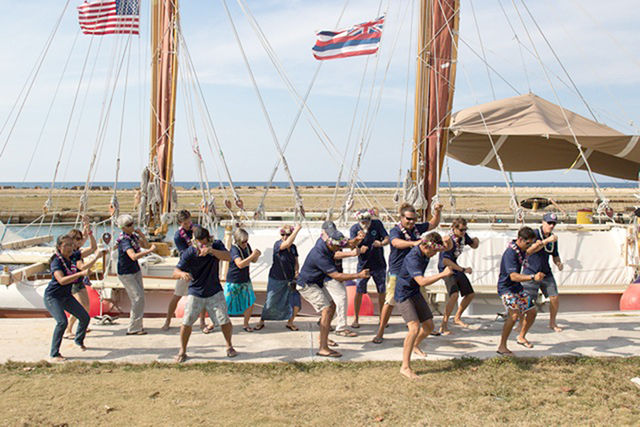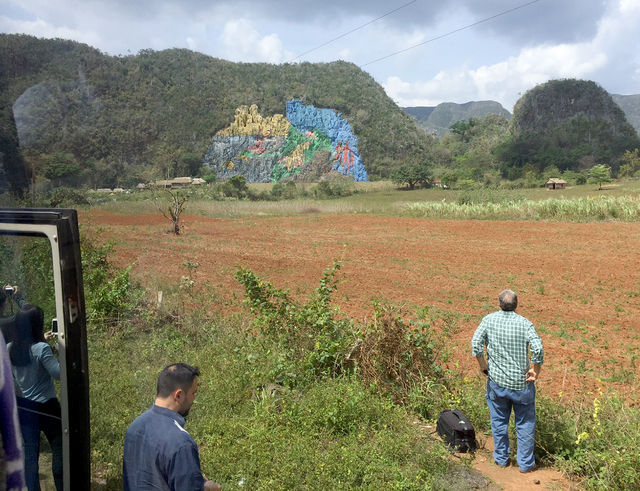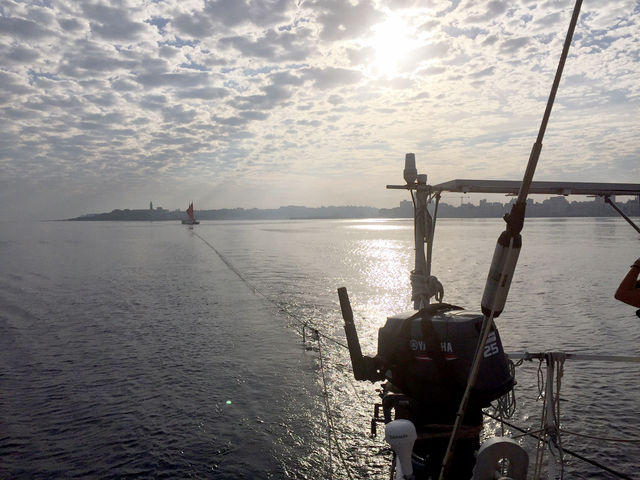A story of resilience, hope



Editor’s note: Anahola resident Mimi George is a sailor and anthropologist specializing in the study of traditional navigation. She has been serving on the crew of the Hokulea’s escort boat Gershon II on the South African leg of the canoe’s circumnavigation. This is her most recent account.
•••
As a child I watched news of the Cuban revolution on TV. I hid under school desks in case of nuclear attack. I wondered how the lives of Cuban people were impacted by our blockades and embargo. More recently I questioned whether Cubans have done better than us in Malama Honua (caring for the Earth).
I was thrilled to learn that Hokulea and escort vessel Gershon II would visit Cuba as part of the Malama Honua Worldwide Voyage. We were in the Virgin Islands when our visas were confirmed. We knew President Barack Obama was arriving during our visit. We also knew that there were a lot of hard feelings among the huge Cuban diaspora in the USA.
Some old friends of mine sailed up to our Saba Rock anchorage in the British Virgin Isles, and I was introduced to one of their family. When he learned that I was going to Cuba he asked me “Do you speak Spanish?” I told him I could probably understand it if he spoke it. He then turned away from the group and sotto voce said (I now translate) “I was in the Mariel Boatlift of 1980 … I have a message for you to tell Fidel.” I said “Well, I do not expect to speak with Fidel, but if I should be able to do so, what would you have me say?” With his eyes fiercely engaging mine, he said, “Tell Fidel I am free!”
The Worldwide Voyage of Hokulea arrived in Havana Harbor on March 18. We towed Hokulea around the shoreline to announce our presence with blowing of pu (shell trumpet) and chants (oli) of opening. Then we proceeded eight miles west to moor with nearly 100 other yachts at the capacious Hemingway Marina.
For four full days and nights we rode a big tour bus, roving from the farmlands east of Havana all the way into the cool, scoured coral, mountain valleys of the far west. We had air conditioning, soft reclining seats, and a constant supply of bottled drinking water. Our tour guide Jesus (pronounced “hey-soos”), of Altruvista Tour Group, served as our eloquent and hard-working Cuban government guide. His stated goal was to help us to understand the revolutionary process and daily life of Cuban people.
Our group included 15 crew members of Hokulea (star of joy), six of Gershon II (stranger in a strange land — to be treated as family), plus several members of our Hawaiian, Cuban and international ohana.
Discoveries
As we traveled between historic plazas, organic farms, museums and art studios, we were invited to join in rhythmic dancing to incredibly exciting Cuban music.
It was startling and wonderful to see the prevalence of 1950s cars and the truly amazing array of architecture. Almost all the buildings were decrepit, with a heavy patina of black mold. But those that had been restored were breathtakingly beautiful. Walking the streets of Old Havana was time-travel at its best.
We peered into dark, open doorways and saw people doing their dishes or washing their clothes in a bucket with a hose. The electricity in the homes we entered was carried by ad hoc, single strand, naked wires, twisted and rusty. The unlit staircases between floors were incredibly twisted, slippery and without handrails or grips. But, again, the people inside were cheerful, confident and eager to meet us.
Nowhere did we see beggars, homeless people or mentally ill wanderers. When we did walk out of the public squares onto unlit streets, we did not feel unsafe. By contrast, when we arrived at Key West, the town was full of drunken revelers patronizing 250 bars in 2 square miles. Once again, there I felt that jarring presence of destitute and insane street people among super-yachts and exclusive mansions of the wildly wealthy. How did Cuba come to be so different?
Over a million African slaves labored in Cuba by mid-1700s. They built the grand forts, stone palisades and mansions for their Spanish masters. The Cuban revolution started over 100 years before Fidel Castro, Celia Sanchez, Che Guevara and a very small band of fighters offered revolutionary leadership to the downtrodden populace.
Between 1957 and 1962, the general populace rose up. They overthrew the brutal dictator and American puppet Batista, and rejected further American controls.
Caring for Cuba
It is obvious that Cubans have been challenged to care for their island and extensive reefs. Most of the infrastructure that most Americans pride themselves on is crumbled beyond repair, or non-existent in Cuba.
When our bus took wrong turns into barrios I saw big piles of rubbish in some gutters. The homes were small and often structures were falling apart. But it was the lack of direct communications that most Cubans said needed to be changed. I could not mail postcards from Cuba because the USPS will not accept mail from Cuba.
I only found access to working WiFi at a tourist hotel on my last evening there. Most Cubans cannot afford to spend 3 pesos (about $3.60) for an hour of WiFi.
I wondered what would it take to transform Havana into a modern city, and restore Cuba to its former glory as an international center of communications … as it was since pre-Columbian times? Will most of the exquisite beauty and charm of the architecture be lost in the process?
But more to the point of our Malama Honua, I wondered if it was precisely the lack of modern stuff that might have resulted in Cubans doing less long-term harm to their island, and our planet, than we have done on Kauai? More to the point, in what ways they might have learned to become more sustainable than we are?
Our last evening in Havana we watched the nightly firing of the cannon from the old Spanish fort. It was a cold night, and the usual majority of Cuban spectators were not present. But hundreds of people trouped over the moat and along the ramparts to the plaza where the white-uniformed fusiliers stood ready.
So with this history of horrors, how does it come to be that the Cubans everywhere we went seemed to be so happy and safe? Our guides assured us that every person has free education, free preventatively oriented health care, and at least one home to live in free of rent! Given our troubled history, why do they seem so pleased that we are here?
Resilience
Our overwhelming impression of Cuban life was one of resilience. From our Hawaiian perspective it seems obvious that their resilience is based on a foundation of Ho’oponopono (release and forgiveness). The Cubans we met were grateful for their freedom from colonial oppression, and they simply did not hold onto their bitterness. How did they not only survive, but actually thrive in these way, despite long-lived and virulent American belligerence?
Only two times did I see resentment expressed during our 4 1/2 days in Cuba. Once was when we walked out onto a residential street from a restaurant where we had eaten lunch. A man across the street from our bus was yelling at some people on his side of the street. He was upset by what he was hearing on the TV while Obama was talking as part of the welcome ceremony. He did not want Americans coming to Cuba and he did not want us parked on the street in front of his house. The neighbors disagreed vehemently. Eventually the man’s wife came out of their house, took his arm, and led him back home.
Another time, our last evening in Ernest Hemingway Marina, I went into a hotel to try to access WiFi. The entire lobby staff was gathered at the TV watching Obama address the Cuban Parliament. “He soars!” exclaimed one man in appreciation of Obama’s speaking skills. They cheered when Obama said he was “trying to end the embargo.”
One citizen of the Cuban republic asked one of our crew members, “How is it that your president is less important than your legislature?” Then, when Obama was talking about the democratic process, he noted that after a long and difficult effort 20 million more Americans had health care. A Cuban man standing next to me raised his arms to the TV and asked pointedly, “And what about the rest of the people who need it?”
Our intrepid Hawaiian/Cuban organizer, Malia Everette, agreed that to be so resilient the Cuban people had to simply let go of their resentments and get to work. And that is exactly what they did. We all need to come together now and help each other to Malama Pono (care for the planet).
Going forward
We sailed for Key West against a tide of international visitors who were arriving in Cuba hoping to go to the Rolling Stones’ free concert in Havana. We heard from our friend who sailed his yacht into Havana the next day, and waited in line for eight hours to gain entry to the stadium.
There, he joined 500,000 people. Cuban bands played long before and after “Los Rollings” played their set. The music, dancing and celebration went on for two full days … as a sort of international version of Woodstock that celebrated reconciliation between Cuba and the USA, and steps toward a relationship that we all hope will be defined by much more mutually respectful terms than ever before.
We clearly have a lot to help each other with, and to share … and doing that will give us all a chance to both be more resilient in our efforts to Malama Honua. As Obama said in his speech to the Cuban people, we should go forward “as family, friends and neighbors.”
Surely this is a story of hope.
•••
Mimi George is a resident of Anahola.
